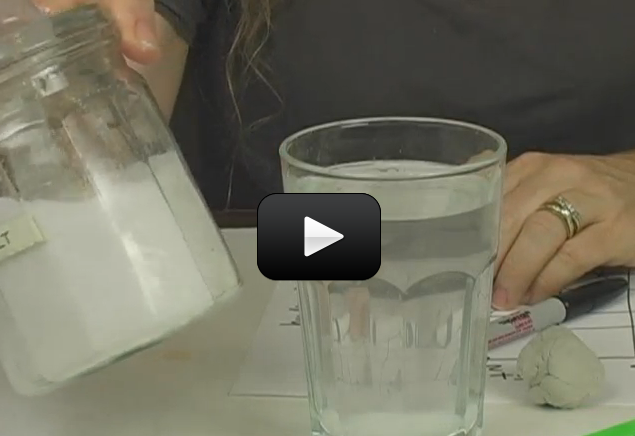With a name like hydrometer you might pause and say: “…a what?” You might have even gone a step further and added “why do I want one of those?” Simply put, hydrometers test the density of liquids. Specifically, they compare the density of liquids to the density of water (a comparison called the specific gravity of a substance). A substance’s specific gravity is extremely useful. We use it to tell how creamy milk is, how much alcohol is in spirits, how salty the ocean is, and much more! In the following experiments we’ll test the salinity of several solutions.
(Note: This is different from a hygrometer, which measures the humidity of the air!)
[am4show have=’p8;p9;p28;p55;p87;’ guest_error=’Guest error message’ user_error=’User error message’ ]
Here’s what you need:
- Drinking straw
- Modeling clay
- A drinking glass
- Salt
- Distilled water (or as filtered as you have on hand)
- Permanent marker
- Graph paper (optional)
Download Student Worksheet & Exercises
Here’s what you do:
- Plug one end of the straw with a small marble-size ball of clay. This is your hydrometer.
- Fill your glass with water (find a glass that holds about 2 to 2.5 cups of water).
- Place the hydrometer in the glass. Add or remove clay until the straw floats midway up your glass. Mark that level “0” with the permanent marker (because there is no salt).
- Remove the hydrometer.
- Add 1 teaspoon of salt to the water.
- Place the hydrometer in the glass. Mark the new level and label it “10” for 10 ppt (parts per thousand).
- Add another teaspoon of salt to the solution.
- Repeat step 6 (except this time mark the level “20” for 20ppt).
- Repeat until you have marks up to 50 (or higher!).
- Have a partner prepare unknown solutions of salt and water. Test them with the hydrometer. Graph your findings. Extra credit: try solutions at different temperatures!
How does it work?! The hydrometer works via the Archimedes Principle which states that an object will be buoyed up by the force equal to the weight of the fluid displaced. Thus, the more dense the fluid, the more force it exerts on objects floating in it. This is why the hydrometer moves higher as more salt is added. Cool, huh?
Troubleshooting: Is your hydrometer not working correctly? First, check the plug. If the plug is letting water the hydrometer may be getting heavier as you add salt—the opposite result you expect!
Exercises
- What do hydrometers test?
- What is specific gravity?
- What is the Archimedes Principle?
- Would a boat float better in water or honey? Why?
[/am4show]


No, fish can’t live in distilled water. They need the minerals found in regular water. Never put fish in distilled water.
QUESTION:
could fish live in distilled water???
Guess we became our own hydrometers when we floated in the Great Salt Lake in Utah on vacation!
Thanks so much – we’ll fix that in a jiffy!
Grammar nit-picking: ” A substances specific gravity… ” in intro paragraph should read: “A substance’s specific gravity…”
The gravity belongs to the substance. Also, “A” indicates singular, while “substances” is plural.